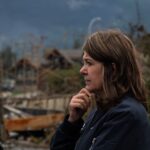The blistering heat waves scorching Toronto’s summer months are no longer anomalies but indicators of a troubling climate trend. A comprehensive analysis of temperature data across Major League Baseball cities reveals Toronto is warming at an alarming rate—faster than any other MLB host city in North America.
According to research from Climate Central, a nonprofit science communications organization, Toronto has experienced a temperature increase of 3.2°C since 1970, significantly outpacing other baseball metropolises. This rapid warming trajectory puts Canada’s largest city in an unenviable position at the forefront of urban climate change impacts in North America.
“What we’re witnessing in Toronto represents an acceleration of climate patterns that should concern urban planners and policymakers alike,” said Dr. Melissa Richards, climate scientist at the University of Toronto. “This isn’t merely about discomfort during summer games at Rogers Centre—it reflects fundamental shifts in our urban climate reality.”
The findings show Chicago and Minneapolis following closely behind Toronto, with temperature increases of 2.8°C and 2.7°C respectively. Meanwhile, coastal cities like Seattle and San Francisco have experienced more modest warming, highlighting the geographic disparity in climate change impacts across the continent.
The consequences extend well beyond baseball. Toronto’s Public Health Department reported a 67% increase in heat-related emergency room visits over the past decade. Urban heat island effects—where concrete and asphalt absorb and radiate heat—amplify these temperature rises, particularly in densely populated downtown areas surrounding the Rogers Centre.
City officials have responded by expanding Toronto’s Urban Forestry Strategy, aiming to increase tree canopy coverage from 28% to 40% by 2050. Additionally, infrastructure upgrades including cool-roof technologies and heat-resistant materials for roads and buildings are being implemented to mitigate rising temperatures.
“The rate of warming demands immediate adaptation strategies,” noted Claire Williams, Toronto’s Climate Resilience Coordinator. “We’re looking at everything from expanded cooling centers to redesigned public spaces that provide natural shade and cooling.”
The economic implications are equally significant. Toronto’s energy grid faces mounting pressure during summer months, with peak electricity demand for cooling rising approximately 23% since 2000. Analysts project additional annual costs of $287 million by 2030 for cooling-related infrastructure and energy consumption if current warming trends continue.
Sports venues themselves are adapting. While Rogers Centre benefits from its retractable roof, many outdoor venues across the MLB are implementing heat management strategies including misting systems, shade structures, and scheduling adjustments to protect both players and fans.
Climate scientists emphasize that Toronto’s experience represents a preview of challenges other North American cities will likely face in coming decades. The city’s rapid warming serves as a real-time laboratory for urban climate adaptation strategies.
As Toronto confronts its accelerating climate reality, the question remains: will the city’s adaptation efforts keep pace with the unprecedented rate of warming, or does this signal a fundamental shift in how we must design and inhabit our urban environments in the face of climate change?

























